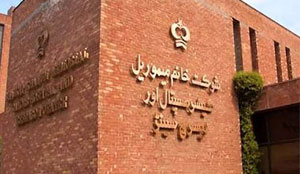The circle of life and art
Art has always played a fundamental role in my life. During the COVID-19 pandemic, it became a source of comfort, a form of therapy, which inspired me to begin an internship at a small local arts and crafts camp for kids in Washington, D.C, where I study.
In Washington DC, where I attend the British International School, I volunteer as a teaching assistant after school to work with kids aged 4-8 and explore art there – both as a teacher and as a student. Children arrive anxious but leave visibly happy, with a sense of personal accomplishment.
I soon realized that art and mental health go hand and hand. At school, I led an assembly about my plan to travel to Lahore over my spring break to conduct a Tree of Life art project with the children undergoing chemotherapy treatment at Shaukat Khanum Memorial Cancer Hospital and Research Centre.
I invited students and teachers alike to make cards for the kids at Shaukat Khanum. Over 200 students made cards. Through a series of bake sales, I collected the required funds to buy art supplies and gifts for the patients.
I spent a week (4-11 April) at the inpatient department for pediatric patients at the Shaukat Khanum Hospital. Many of the children there were undergoing chemotherapy and could spend only a little time with me.
This internship was one of the most rewarding experiences in my life. The very first patient I worked with was Abuzar, a six-year-old boy from Peshawar. He wore different hats each day and was soft-spoken and polite. I encountered young patients aged 5-15 who welcomed the idea of drawing or arts and crafts. I noticed while I was there that the patients who had been there for longer tended to opt for darker colors when coloring, like deep blues, blacks and purples whereas children who had been at Shaukat Khanum for a week or less chose brighter colors, like reds, pinks, yellows and greens.
Mudassar (10 years old) who had come from Dubai for treatment switched off the cartoons on the TV and engaged with me painting birds using a stencil. Three others – Burhan, Ahmad and Azar – were equally participative.
On my last day, I was escorted to the Pre-Op and Post-Op ward. That proved an emotional challenge for me. I saw small children lying on large beds, recovering from their operations. Serious illness can be scary and overwhelming – particularly for children who have no control over the strange medicines being injected into their bodies.
I asked each child to draw and colour a tree. Each symbolized the massive tree of life that spreads its branches from Washington DC to a cancer hospital ward in Lahore.
I would like to express my gratitude to the administration and staff at Shaukat Khanum Memorial Cancer Hospital and Research Centre for making this art project possible, where I was proud to witness quality treatment being provided to cancer patients, irrespective of their socio-economic back ground. It has been a life-changing experience for me.
—The author is a student of British International School in Washington D.C










